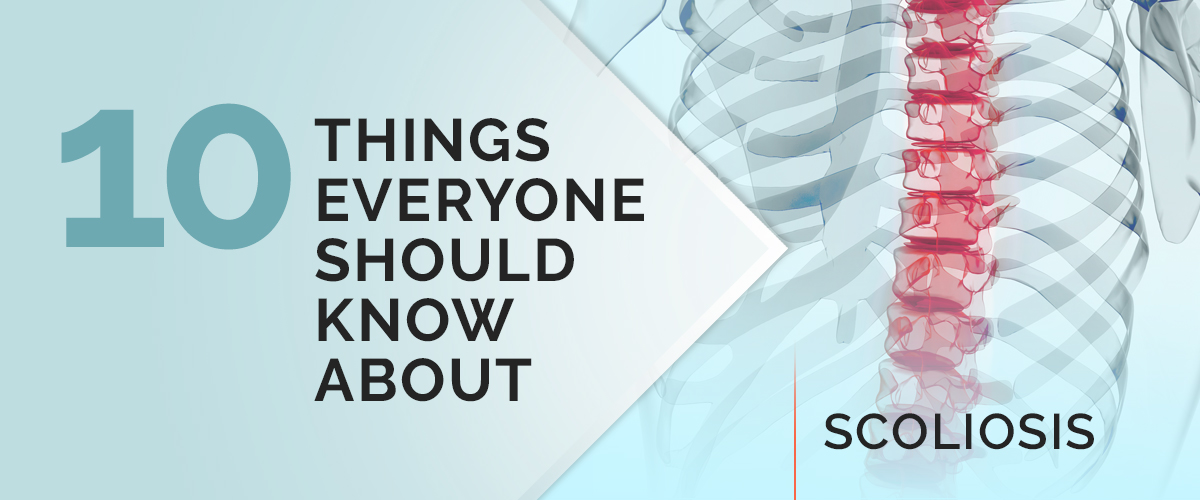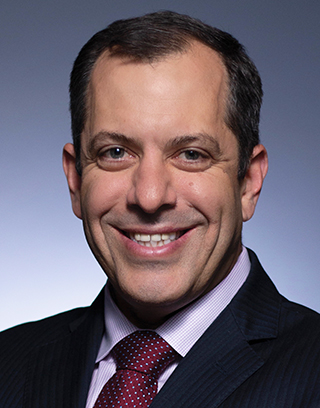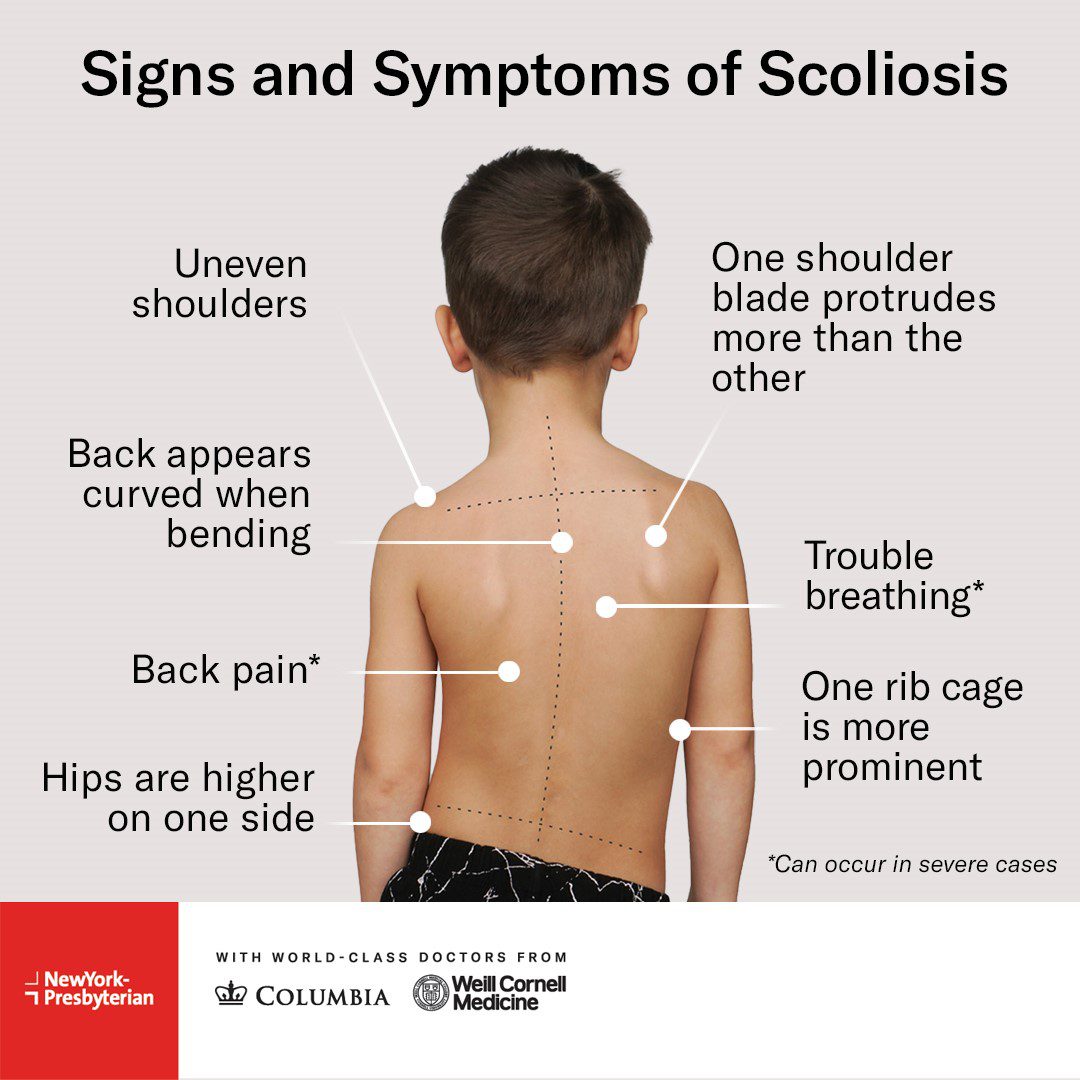What to Know About Scoliosis
A leading spine expert shares 10 things parents and caregivers should know about this common, treatable condition.

Scoliosis, a common, sometimes hereditary spinal condition, is a curvature of the spine that affects 2% to 3% of the population in the United States, or an estimated 6 to 9 million people. It’s most often detected during adolescence, and it can vary from a slight abnormality to an extreme curve that can affect how a person walks and breathes.

Dr. Michael Vitale
But with new opportunities for patient care that didn’t exist even a few years ago, Dr. Michael Vitale, chief of pediatric spine surgery at NewYork-Presbyterian Morgan Stanley Children’s Hospital and NewYork-Presbyterian Och Spine Hospital, says providers are better equipped than ever to help stop the curve before it gets to a point where a person needs surgery.
“If your child has scoliosis, don’t be afraid of it,” says Dr. Vitale. “The key is being aware of it and getting the diagnosis early so you can begin treatment. When treated early, there’s a lot of hope for stopping curve progression and allowing kids to live a perfectly active, normal life.”
For Scoliosis Awareness Month in June, Dr. Vitale spoke to Health Matters to share 10 important facts for parents and caregivers of children with scoliosis.
1. Scoliosis is common. It is the most common spinal condition in children.
2. The most common type, adolescent idiopathic scoliosis, starts just before puberty. It is most often detected between the ages of 10 and 15, around the time of a child’s growth spurt — usually a year before a girl gets her period or a boy begins growing hair under his arms or in his groin. Children typically have a spine check each time they have an annual physical with their pediatrician, Dr. Vitale says, and often also by the school nurse.
3. See a specialist. If there’s any asymmetry detected in your child’s shoulders, shoulder blades, spine, or pelvis, see a pediatric spine specialist to have an X-ray performed. If scoliosis is present, the doctor can measure the degree of curvature. This specialization matters, says Dr. Vitale, because a place like NewYork-Presbyterian Och Spine Hospital, which sees a lot of children with scoliosis and employs a number of scoliosis-specific physicians, physical therapists, and orthotists (experts who make braces), will have the depth of experience to diagnose and treat all forms of scoliosis.
4. Early diagnosis is key. Dr. Vitale says treatment for children with a spinal curve of about 25 degrees can be treated without surgery by using scoliosis-specific physical therapy, vitamin D supplementation, and sometimes a brace.
5. A child should wear the brace as recommended for full benefit. Not all braces are the same, says Dr. Vitale, so when a brace is needed, talk to your scoliosis doctor about custom-fitting your child with an external brace (a vest-like garment) to keep the scoliosis from getting worse and to maintain an upright spine. We choose the most effective brace that your child is most likely to wear as prescribed. Your child should wear the brace for 16 to 18 hours every day until he or she stops growing. This will help establish that the spine straightens adequately and will stay straight into adulthood.
When caught early, there is a much better chance of slowing or stopping the curve progression of scoliosis in children. Here are some signs and symptoms to look out for that mean you should follow up with your pediatrician or a pediatric spine specialist:

6. Scoliosis-specific physical therapy can help. A physical therapist can teach your child specific exercises and corrective breathing techniques to develop the inner muscles of the rib cage and change the shape of the upper trunk to help slow or stop curve progression.
7. If surgery is needed, there are many treatment options. If your child has a curve of 50 degrees or more, surgery is usually necessary. There are a variety of different approaches depending on the age of your child. For younger children, growing rods are often used — including some that can be periodically lengthened by using magnets to remotely control rods that were implanted in the spine, to avoid additional surgeries. “Tethering” of the vertebrae with screws and cords placed in the spine is a treatment option for somewhat older children who are still growing. Fusing parts of the spine in an operation through the back is the standard of care for most adolescents and teenagers.
8. Scoliosis is not just a cosmetic problem. Scoliosis that remains untreated can get worse. Once the curve hits the 70-degree stage, lung function may be impaired. Curves of 90 degrees or more can worsen both lung and heart function.
9. Children with scoliosis who receive treatment can live normal, active lives. Even in the subset of patients who do need surgery, treatments have continued to evolve and improve and outcomes are typically great, says Dr. Vitale. Often kids can get back to full sports activities, including things like gymnastics and dance.
10. Scoliosis is treatable. There have never been better treatment options for children with scoliosis, says Dr. Vitale. With more accurate body scans, X-rays that use barely any radiation, and more advanced bracing, the sooner treatment starts, the less likely it is that your child will need surgery, and the healthier they will be.
Michael G. Vitale, M.D., is chief of pediatric spine surgery at NewYork-Presbyterian Morgan Stanley Children’s Hospital and NewYork-Presbyterian Och Spine Hospital. He specializes in the non-operative and operative treatment of complex pediatric scoliosis and other spinal disorders, and performs approximately 200 scoliosis procedures every year, half of which are in children less than 8 years of age.
